
Last year, YouTuber Super Eyepatch Wolf posted a video titled "The Problem with Silent Hill 3: the Downfall of Team Silent". In that video, Super Eyepatch Wolf asserts that the design of Silent Hill 3 changed early in development, as a result of pressure from Konami. He claims that early designs for the game were going to be a more personal, introspective tale, in the vein of Silent Hill 2.
YouTuber Super Eyepatch Wolf posted a video last year asserting that Silent Hill 3
was originally going to be more similar to Silent Hill 2's personal and introspective story and style.
Konami may not have been happy with this early design because -- believe it or not -- there were apparently many vocal fans of the first Silent Hill game who were upset that Silent Hill 2 had not continued the story set forth by the first game. So Konami mandated that Team Silent make Silent Hill 3 be more of a continuation of the first Silent Hill, and so SH3 was re-written as a direct sequel to the first game, and returned to the narrative of a cult trying to birth a demon god.
I've adapted this blog post into a YouTube video response to Super Eyepatch Wolf.
It's hard to believe, but when it was first released, Silent Hill 2 was not universally regarded as the "gold standard" of video game horror. You can look at middling contemporary reviews from publications like Gamespot and GameInformer. In those days, the series was perceived as being "about occultism", and Silent Hill 2 was a stark deviation. Now, with a generation of gamers having grown up playing and loving Silent Hill 2, there's an effort now to re-frame the entire series as having always been about a haunted town torturing the guilty, even though three out of four of the original games are explicitly about a cult trying to re-birth its demon god, and repressed personal guilt is only featured in one of those four games.
Silent Hill 2 was the only of the original 4 games to be about the protagonist being punished for repressed guilt.
But that may not have always been the plan...
If Super Eyepatch Wolf is correct, then Team Silent may have wanted to pivot the narrative focus of the series away from occultism and towards more personal stories like SH2 -- though, importantly, not necessarily about repressed guilt or amnesia!
I have a complicated relationship with the question of "what is Silent Hill about?" Readers of my personal blog will know that I've rigorously defended the idea of Silent Hill (as a series) being about occultism, and that new entries in the series should respect that history, rather than trying to re-frame the entire series (and the nature of the town itself) to be about a haunted town that summons people to face their hidden guilt.
That being said, it isn't that I have a particular attachment to occult stories, even though a lot of the games that I like (such as Demon's Souls and Blooborne) also have strong occult threads. I also am definitely not opposed to more thoughtful, introspective stories. Silent Hill 2 is my favorite game in the series because of that thoughtful, introspective story! Rather, I've found all the third-party-developed games after Silent Hill 4 to be highly derivative of Silent Hill 2 and not particularly good.
Silent Hill 3 pivoted hard back towards the occult inspirations of the first game.
But is that really what Team Silent wanted?
Super Eyepatch Wolf does have some quotes and evidence to support the idea that Silent Hill 3 was originally intended to be a very different game -- all of which was taken from a single interview. But there's not much (if any) information about what the actual story of that game may have been. Nobody on Team Silent has (as far as I know) talked about it, nor do we have a leaked design document like what we have for Silent Hill: Cold Heart (the Wii-exclusive that eventually transformed into Shattered Memories).
... [More]
Silent Hills just won't seem to die. Shortly after the game was canceled by Konami, petitions started popping up demanding that it be re-instated. Then came the debacle of the Metal Gear Solid V release, which seemed blatantly incomplete and/or half-assed. Then Kojima officially left Konami, Guillermo del Toro tweeted that the cancelation of Silent Hills "breaks his greasy heart", and it all seemed done and buried.
Or was it?
Andrew House (Group CEO of Sony Interactive) announces a partnership with Hideo Kojima.
Within a week of the official announcement that Kojima had left Konami, he was reported to have already set up his own independent Kojima Productions studio, and that he had already partnered with Sony to develop an un-named PS4 exclusive. Geez, that was quick. Kojima has always had a good relationship with Sony. The Metal Gear Solid games were originally PlayStation exclusives, and were definite showcases for those Sony platforms. I mean, when you think of the original PlayStation, what are the first few games that come to mind? Probably Final Fantasy VII. Tomb Raider? Maybe Resident Evil? And definitely Metal Gear Solid. Even when Kojima was initially rumored to be leaving Konami, I had speculated that Sony might make a move to hire him. Contracting him to act as a second-party developer of exclusive content is just as good. I had also speculated at the time that there were three possibilities for Silent Hills to see the light of day:
- Konami could hire Kojima's independent studio to continue development of Silent Hills. This seemed unlikely considering the rocky conclusion to Kojima's employment.
- Kojima could buy the IP rights to Silent Hill (and maybe Metal Gear). This also seemed unlikely considering that both franchises are cash-cows for Konami.
- Lastly, there was the possibility that Kojima Productions could continue the development of what would have been Silent Hills, but without the "Silent Hill" title. Same game; different name.
The partnership with Sony opens up a fourth possibility: Sony could buy or lease the licensing rights to Silent Hill and then contract out development to Kojima Productions. This is the only way that the game could possibly see the light of day and still maintain the "Silent Hill" name. Konami has already expressed its disinterest in continued first-party console game development. It's just too expensive, and the company wants to focus more on its gambling business and mobile games. If Konami wants to continue to see revenue from those IPs, then they are stuck either making smaller in-house games (such as mobile games, pachinko machines, or browser-based games); or they would have to license out the IP to third-party developers. Sony certainly has the buying-power that Kojima, by himself, doesn't have, and could certainly afford to buy those rights, if they so desire.
A trailer for Konami's next Silent Hill game. Not exactly what fans were hoping for...
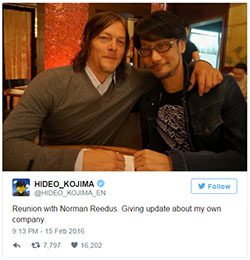
However, Silent Hill fans probably shouldn't get their hopes up for a triumphant return of their tarnished, yet beloved, franchise. In the video announcing the partnership with Sony, Kojima says that he is "thrilled to embark on creating a new franchise with PlayStation". So this project does not appear to be Silent Hills. At least, not in title...
Kojima is rumored to be collaborating once again with Guillermo Del Toro, which opens up the possibility that the two are going to work on realizing the plans that they had for Silent Hills. During a keynote address at DICE, Kojima and Del Toro stated that they would like to continue to work together. Del Toro even went as far as saying that he would "do whatever the fuck Kojima asks him to". He even made an off-hand comment about famed Japanese horror illustrator Junji Ito. I don't know much bout Junji Ito, but his work is apparently a pretty big deal, and he's also been seen with Kojima. Kojima and Norman Reedus have even been seen together, and it's been rumored that Reedus will be working with Kojima again. All the pieces seem to be fitting into place... [More]
950b88ce-adc4-4f17-85ce-fd55c7172eb0|2|5.0
Tags:Hideo Kojima, Guillermo del Toro, Andrew House, Norman Reedus, Junji Ito, Kojima Productions, Sony, PlayStation 4, PS4, virtual reality, PlayStation VR, exclusive, Konami, Fox Engine, Silent Hill, Silent Hills, P.T., Metal Gear Solid, Metal Gear Solid V: the Phantom Pain, Fungo, RagnarRox, conspiracy, rumor
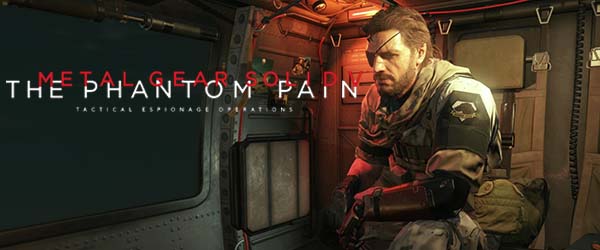
Are you one of the poor suckers who paid $30-40 for Ground Zeroes and were ready for The Phantom Pain to make up for your disappointment with what was little more than a glorified (and over-priced) demo? I wasn't, because I got Ground Zeroes for free from my PSPlus subscription around the same time that Phantom Pain was released. I was obviously disappointed with the demo's short length, and I didn't bother doing any of the side missions. But since I didn't pay for it, I wasn't as enraged as some other players might have been.
I actually really liked what little gameplay Ground Zeroes had to offer. The Guantanamo Bay arena was well-designed and offered some good infiltration challenge that tested my Metal Gear capabilities. The A.I. was surprisingly competent and adaptive - not so much that I couldn't exploit them occasionally, but still good. The graphics, lighting, and weather effects all looked outstanding. It was a fun experience. Not "forty dollars fun", but pretty fun. At least part of the battle at Mother Base should have been playable, and I didn't like that large elements of the story were hidden away in collectible audio tapes, but whatever.
I got Ground Zeroes for free on PSPlus, instead of paying $30-40 MSRP for a glorified demo.
Ground Zeroes gave me flashbacks to the phenomenal classic Sons of Liberty demo that came packaged with Zone of the Enders on the PS2. At least that only cost me a $3 rental, and I got to play Zone of the Enders too. After Ground Zeroes, I was looking forward to getting my hands on the much bigger Phantom Pain, and was optimistic that it would provide an equally good experience that would be worth the purchase price. Phantom Pain is a very long, very complicated, and very uneven game. So buckle up, friend. This is going to be a long review.
Table of Contents
After having written a lengthy blog post about how open world, sandbox game design almost necessarily puts the game's narrative in a state of limbo, I was amazed to start up Metal Gear Solid V and see the very first mission took my criticisms to heart. Of course, the game had already been released by the time I had written that opinion piece, so I can't take credit for having influenced its development, but it was still refreshing and gratifying. Anyway, in the very first mission, Ocelot tells you that Miller has been captured by Soviets in Afghanistan, has been tortured for intel, and has three days - tops - to live. You must rescue him before that time.
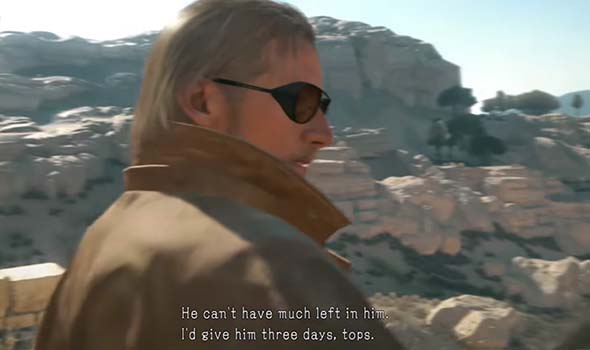
Ocelot gives the player three days to rescue Miller...
At first, I didn't put much stock in Ocelot's claim. After all, sandbox games are notorious for saying that something needs to be done ASAP, but they never have the balls to actually walk the walk and enforce that objective. Until now. When checking my map, I noticed something in the corner that I hadn't noticed in other sandbox games before: an "elapsed time" counter. The game was plainly tracking how long it was taking me to complete the primary mission objective. I treated this timer with a certain degree of skepticism. But sure enough, failure to rescue Miller within the allotted time actually results in a "Game Over"!
This is exactly how I feel that priority objectives in open world games should be handled: make it apparent to the player (through dialogue and/or explicit notification) that an objective is being timed or that it is otherwise a priority, and make sure that there are reasonable, perceivable consequences for failure to achieve that objective within the expected conditions. Then design some early-game quests or objectives such that the player is put in a position in which they can (or must) fail; thus, teaching the player that when the game says "do x or else", the game actually means it. I put down the controller and gave Hideo Kojima a standing ovation. But would this opening mission set a precedent that priority missions must actually be prioritized, and would that precedent stand throughout the rest of the game? Or was this just a one-off occurrence that would not be representative of the rest of the game? Regardless, a tone was plainly set for the rest of the game, and the stakes had been raised.
... Failure to rescue Miller within the allotted time results in his death and a Game Over.
Would this refreshing precedent carry over into the rest of the game? Well, sort of... [More]
11c3f412-b61e-422f-96c9-742ddb50d6fb|5|4.2
Tags:Metal Gear, Metal Gear Solid, Metal Gear Solid V: the Phantom Pain, Konami, Hideo Kojima, Fox Engine, tactical espionage operations, tactical espionage action, espionage, stealth, snake, Big Boss, Revolver Ocelot, Quiet, dog, Diamond Dogs, Afghanistan, Africa, open world, desert, sandbox, Fulton Recovery System, balloon, horse, Mother Base, helicopter, Soviet Union, Skull Face, Cipher, Zero, Sahelanthropus, Keifer Sutherland, David Hayter, ludonarrative, ludonarrative harmony, FOB, online, PvP, Metal Gear Online
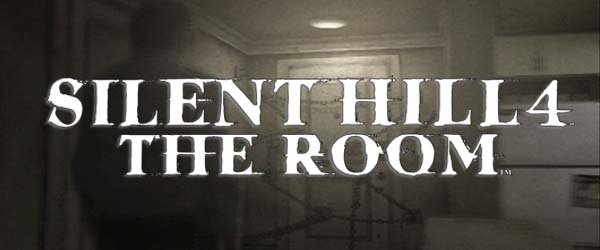
While I was playing through recent horror titles like The Evil Within, I noticed some interesting similarities with Silent Hill 4 that started to give me a new appreciation for some of this game's stronger aspects. In addition, while doing research for my Silent Hill timeline, I had to go back and play through Silent Hill 4: the Room again. I had only played through the game twice before, so I had to replay it in order to figure out how the timeline would work out. And while I was playing the game, I figured that I might as well go ahead and review it. At the time, it seemed like a novel idea to do a retro review of a Silent Hill game that wasn't Silent Hill 2, but lately, I've been seeing a lot of retro-reviews of The Room popping up other places. I haven't done any retro reviews yet; probably the closest thing has been my review of Demon's Souls. But in light of how unsuccessful the later Silent Hill games have been, the unfortunate cancellation of Silent Hills, and the uncertain future of the franchise (and of Konami as a studio), it's a good time to go back to look at what worked and what didn't about the previous games, and explore the question of whether we even want the franchise to continue.
The Room has the reputation of being the "bad" black sheep of the original Silent Hill tetralogy. I always thought that this reputation was unfortunate, and that the game wasn't quite as bad as people made it seem. I actually liked it better than Silent Hill 3 when I first played it, because I had never played the first Silent Hill. After I was able to track down a copy of the first game and play through it, Silent Hill 3 suddenly made a whole lot more sense, and I came to love it almost as much as I loved Silent Hill 2. So while I tend to agree that The Room is the "weakest" of the original Silent Hill games, I never really thought of it as being "bad"; just "less good". The release of future games by third party developers has only made The Room look better in retrospect.
An experimental formula
The game itself is a bit rough around the edges. It deviates significantly from the controls and mechanics established by the previous games in the franchise, and these changes are very hit-or-miss. This might be due, in part, to the possibility that The Room started out as an independent side project that was developed concurrently with Silent Hill 3, and that was eventually redesigned to work as a Silent Hill game in order to be more commercially viable. Whether or not that's true is still a hot issue of debate among the fanbase, but it's obvious to everybody that The Room plays a lot differently from previous titles.
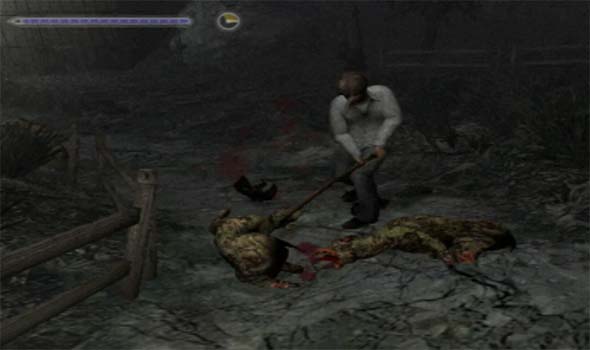
Movement and combat controls are radically changed from previous games in the series.
The most immediately obvious deviation is in movement and camera controls. The semi-first-person "tank" controls have been completely abandoned in favor of direct directional inputs, and the camera is significantly more limited than it has been in previous games. You can't snap the camera behind the character by holding the "look" button as you could do in previous games. Almost all camera angles are pre-set angles, and the player can usually only toggle between two possible camera angles in any given area.
This results in some very clumsy navigation of the environment, and it's very easy for the character to get turned around when camera angles flip. Most of the time, a camera change will go without a hitch, but there are a few frames in the game that consistently result in erratic and unpredictable movement. It happens most often when a camera change occurs concurrently with a change in direction of the character (to navigate around a corner or an obstacle). If the player's timing for changing the character's movement direction is not perfectly-timed, then the character ends up turning around, which can result in getting stuck in a loop between the two camera angles. This is the very reason that I prefer the tank controls. They may be a bit cumbersome, but at least they're consistent and always relative to a single frame of reference (the character's position in the world), rather than to an unpredictable camera.
The second major change is to combat. The game was designed to have a greater emphasis on melee combat, complete with new target-locking controls, a variety of breakable melee weapons, very limited ammunition for guns, and an on-screen meter for charging power attacks. The new movement controls do make it a bit easier to maneuver around enemies (especially multiple enemies), but only if you're in an open space and the camera angle doesn't go all wonky on you. The mechanics are serviceable, and I don't think they're as bad as some critics insist.
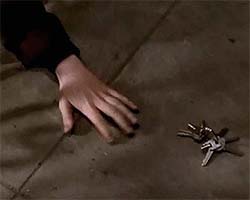
The designers were probably trying to mimic
the horror trope of fumbling for keys.
Inventory management is where things really start to get bad. Henry isn't a walking closet like the previous games' protagonists, and he has only a limited number of inventory slots. This is probably partly the result of the inventory being accessed in real-time by the directional buttons (which also might have played a role in the changes to the movement control scheme being entirely based up on the analog stick), in a desire to create a sense of frantically searching your pockets for a weapon or item while under pressure. It also adds more relevance to the Room 302 hub (another dramatic departure from previous games) by forcing you to go back to restock on supplies or swap out puzzle items.
But it's hindered by a lot of little mistakes... [More]
a5ccd49d-8af1-4839-8eb0-2796d3829980|6|4.5
Tags:Silent Hill, Silent Hill 4: the Room, Konami, Team Silent, KCET, Henry Townshend, Walter Sullivan, Eileen Galvin, room 302, horror, serial killer, murder, cult, occult, 21 Sacrements, sacrifice, ritual, ghost, escort quest, Alfred Hitchcock, retro review

In the comments of a recent post about Silent Hill 2's Otherworld, I had a discussion with a reader about the time period in which the Silent Hill games take place. This is actually an interesting and difficult topic, so I thought that I would dedicate a post specifically to it.
First and foremost, let's remind ourselves of when the games were released:
| Game title | Original release |
 | Silent Hill | January 1999 |
 | Silent Hill 2 | September 2001 |
 | Silent Hill 3 | May 2003 |
 | Silent Hill 4: the Room | September 2004 |
UPDATE 1 January 2020:
A recent tweet from Masahiro Ito claimed that Silent Hill 2 was set in the "late 70's or early 80's", which would make my estimates about 10 later than Masahiro Ito understood the setting to be. If we take evidence in the first Silent Hill game at face value, this would mean that Silent Hill 2 would have to take place prior to the events of Silent Hill, since Silent Hill can take place no earlier than 1987.
It is also possible that Ito's comment is referring to the aesthetics of the game (in keeping with many of the game's film and literary influences), and not necessarily to its actual timeline. It isn't that I don't trust Ito's memory or his authority, but Team Silent went to great pains to conceal the exact date of the games (as we'll discuss in the following post), so it seems that they wanted the years in which the games take place to be ambiguous to the players -- which kind of makes this entire exercise moot.
Contemporary fiction
It is very important to note that no specific dates ever appear in any of the Silent Hill games that were developed by Konami's internal Team Silent studio. If dates are provided, they are either only the month and day (and not the year), or they are time periods relative to the events of the game (such as referring to the "events of 17 years ago" in Silent Hill 3), or it is just the year of an historical event in the past (such as the document about the sinking of the Little Baroness). Even documents that you would expect to have dates (such as newspapers, journals, diaries, patient reports, and police records) are intentionally left dateless (or at least ambiguous).
In Silent Hill 2, there is a point in which James finds newspapers scattered around a hallway. Upon examining the floor or walls, James comments that the newspapers have today's date. This would have been a perfect opportunity for the developers to provide a specific date for the game, if they wanted to. They could have had James read the date on the paper to the player, or the paper itself (with its date) could have been made clearly visible. The developers didn't do this; they left it completely ambiguous.
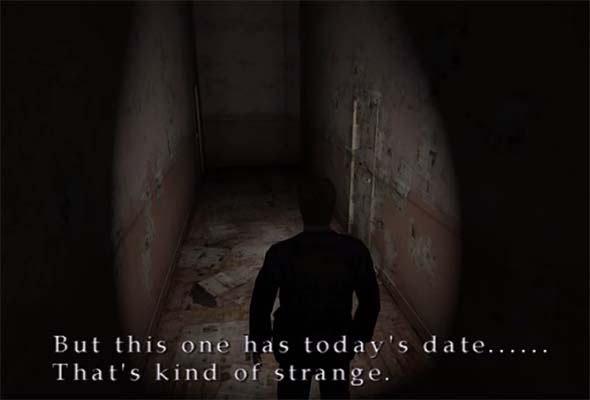
James notes that these newspapers have today's date, but doesn't tell us what the date is.
The developers went out of their way to not provide any specific dates for the games. Why would they do this? Typically, works of fiction that are not set in particular time period are written to be contemporary. Unless otherwise specified, most works of fiction should be assumed to take place now with respect to the consumption of the work by its audience, regardless of when "now" happens to be. if it's not contemporary to consumption, then it's usually contemporary to creation. This is usually pretty obvious if the work contains detailed descriptions of locations, technologies, and events that can be easily dated.
If we look at the original Silent Hill game in a vacuum, then the game provides no internal indication that it takes place at any specific time period. Players in 1999 probably had no reason to believe that the game took place in any year other than 1999. The same is true for Silent Hill 2, 3, and 4: if looked at in a vacuum, they can all be considered to take place in the same year that they were released. And if you didn't even know the year that the game was released, there's very little within the games to indicate that they take place at any time other than now.
However, this assumption falls apart because there is an absolute time difference of seventeen years between the events of the first game and the events of the third game, even though the difference in time between releases of the games was only four years. So we can't assume that each game takes place in the year of its release. At least one game has to be shifted on the timeline. So which game (or games) should be assumed to have taken place when? [More]
0ad2a2d3-abbc-4fd7-b255-126a5de4f3ba|8|4.8
Tags:Silent Hill, Silent Hill 2, Silent Hill 3, Silent Hill 4: the Room, history, Harry Mason, Heather Mason, James Sunderland, Maria, Henry Townshend, 1980s, 1990s, 2000s, 1986, 1987, 1994, 1999, 2003, 2008, 2016, Jeep Wrangler, telephone, cell phone, smart phone, rotary phone, computer, television, technology, anachronism, timeline, Konami, Team Silent, The Silence of the Lambs, Mary Shepherd-Sunderland
|

| 12 | | | | | | | 60 | | 11 | | | | | | | 55 | | 10 | | | | | | | 50 | | 09 | | | | | | | 45 | | 08 | | | | | | | 40 | | 07 | | | | | | | 35 | | 06 | | | | | | | 30 | | 05 | | | | | | | 25 | | 04 | | | | | | | 20 | | 03 | | | | | | | 15 | | 02 | | | | | | | 10 | | 01 | | | | | | | 05 |
|